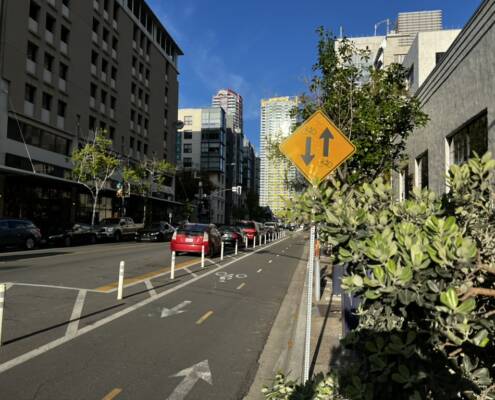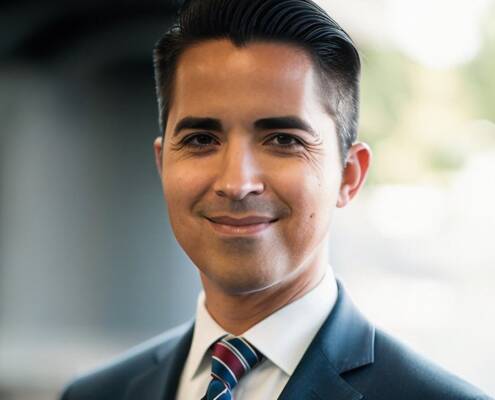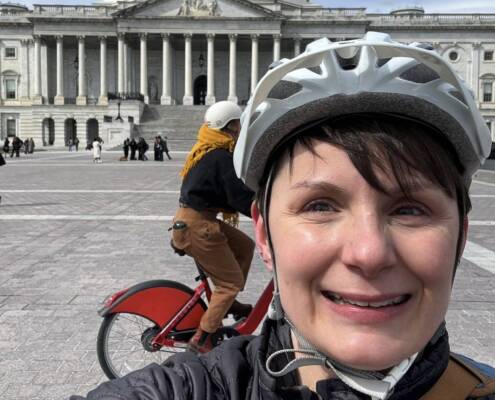CalBike is committed to working to undo the structural racism and inequity built into California’s transportation infrastructure and policymaking. Transportation planning and policies have historically discriminated against, segregated, and displaced immigrants, low-income people, and communities of color, bolstering racial and class inequalities. Current mobility planning processes and decisions often perpetuate these harms.
CalBike is committed to advancing equity through infrastructure, expanding decision-making processes bringing underrepresented communities to the table, working to end the over-policing of Black and brown Californians, and more. We recognize that it is only by addressing and redressing anti-Black violence and violence against Indigenous groups, women, and other marginalized peoples that we will be able to achieve the equity, inclusion, and prosperity that all California communities deserve.
We work to reframe and shift the dominant discourse on transportation planning and policies to relieve historical and current burdens on low-income communities of color and to provide affordable, reliable, and safe transportation options that improve neighborhoods and opportunities in marginalized communities. We collaborate with, learn from, and center marginalized peoples and intersectional allies on issues of mobility justice.
At CalBike, we advocate for bicycling not only because we love the bike as a machine but also because we love how bicycling can make our communities better: more equitable, prosperous, healthy, connected, and inclusive.
 https://www.calbike.org/wp-content/uploads/2024/04/78181CE3-185F-4ED3-9925-F829AB6D82C8_1_105_c.jpeg
768
1024
Brian Smith
https://www.calbike.org/wp-content/uploads/2018/07/calbike-logo.png
Brian Smith2024-04-19 07:54:232024-04-19 07:54:24Senate to Hear SAFER Streets Package
https://www.calbike.org/wp-content/uploads/2024/04/78181CE3-185F-4ED3-9925-F829AB6D82C8_1_105_c.jpeg
768
1024
Brian Smith
https://www.calbike.org/wp-content/uploads/2018/07/calbike-logo.png
Brian Smith2024-04-19 07:54:232024-04-19 07:54:24Senate to Hear SAFER Streets Package








